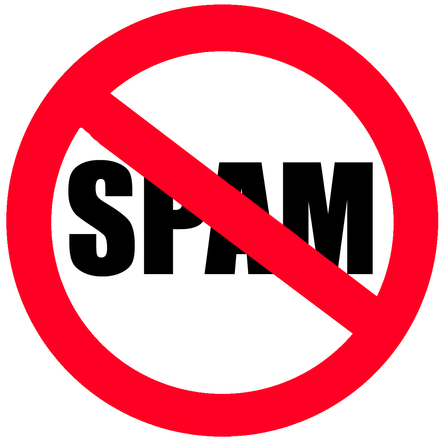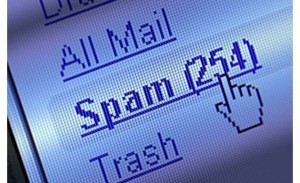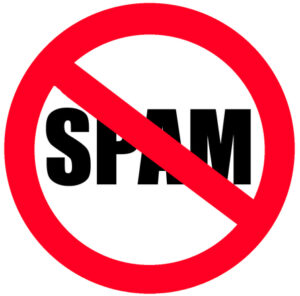Typical mistakes that can turn your emails into SPAM

As we have already mentioned in previous publications, the true email marketing campaign success is that emails reach their recipients correctly. In other words, avoid at all costs that they reach the users' SPAM folder.
With the increased use of email as a marketing tool, email marketing is spammers have also increased the indiscriminate sending of SPAM. For this reason, email regulation is more demanding, and even if your email is not SPAM it may end up in the junk folder because it seems to have indications that it is. Therefore, it is very important that your emails are well thought out and well prepared.
In recent times, there have been many tools that allow us to analyse the deliverability of our emails and give us data on the inbox placement rate. The term inbox placement rateThe inbox placement rate, which we have already talked about, refers to the percentage of emails that arrive in the user's main inbox, and not in the spam folder. In other words, the inbox placement rate is one of the most important parameters when analysing the effectiveness of an email marketing campaign.
Spamming is a lot easier than building a good email. And, without a doubt, an email going to spam is the clearest indication that your email marketing strategy has failed. Here are some of the common mistakes to avoid if you want to run a successful email marketing campaign:
1.Using inappropriate permits
What does this mean? Sending unsolicited emails. That is, sending emails to users who have not specifically agreed to receive periodic emails or offers. This is one of the most typical cases in which emails end up in the SPAM folder because they get caught in the filter and do not pass the requirements to be considered spam.
In order for a user to agree to receive this type of mail, there are different processes that make it possible (opt-in), which will mean that the user is interested in receiving emails with these characteristics.
According to the LSSI law, emails may not be sent without the express permission of the recipient.. Of course, there are exceptions, such as if a user has maintained a commercial relationship with the brand, which may send him/her products or services similar to the purchase or contract made.
2.Integrate content considered as SPAM:
All content that is included in the email, if not handled carefully, can be considered SPAM. Here are some examples of what you should avoid including in your email content:
- Hash bustinguse of words or special characters that do not make sense in the context of an email and are used by spammers to circumvent the SPAM filter (e.g. "Fr3e", "W¡nn3r")
- Use of unreliable links
- Use of misleading subject lines (such as using "Re:" or "Fwd:" when you have never communicated with the user before).
- Use of capital letters when it is not necessary
- Use of many images and little text
3. Ignoring legality
To find out if what you are doing is right or wrong, you should check the regulation on email marketing campaigns. It will give you a guide to what you can and cannot do. Many people are unaware of the legal regulations that govern this type of campaign, which is a huge mistake, as the consequence of violating the laws that regulate this sector can be to classify your email as SPAM. Not knowing or being unaware of these laws does not exempt you from misusing this marketing tool.

What are the laws that affect and condition email marketing campaigns in Spain?
- LOPD: Ley Orgánica de Protección de los Datos de Carácter Personal (Organic Law for the Protection of Personal Data).. This law obliges the protection of a user's data from fraudulent use or commercialisation.
- LSSI: Law on Information Society Services and Electronic Commerce.. This law seeks to regulate all electronic communications to prevent abuse and protect consumers.
4. Sending content that does not interest the recipient
Don't send emails to users that you already know are not interested in what you have to tell them. A very common mistake is to send emails with content that does not interest the recipient. The study "How today's email marketers are connecting, engaging and inspiring their customers" conducted by Experian in 2013, states that 60% companies do not let users choose what kind of content they want to receive.The 30%, well above the 30% which does let them.
It is important to send content that is useful and interesting to users, and to do so, it is important to take into consideration the email open rateto know which users are interested and which are not. For example, if a contact has deleted an email several times without opening it, you should not keep sending them emails because the only thing you will achieve is that they will end up in the trash or in the unwanted emails folder. For this reason, it is very important to take care of the contact list of your database and renew it from time to time, and adapt it according to the analysis of the effectiveness of your emails. In addition, it is important to take into account the form opt-in of each user to suit their needs and tastes. If a user has chosen the option to receive occasional information, if you send them emails four times a week, they will get tired, unsubscribe or mark you as SPAM.

5.Bombarding your users with advertisements
The most typical and at the same time the most dangerous mistake. A user gives you his or her email address to receive information and  why not, some advertising, but not to fill their inbox with unnecessary advertising. According to the Adigital report "Research on the use and perception of email marketing in Spain"., 52% of internet users consider that they receive too much advertising, making it the main reason why a user does not open an email. The majority of internet users say that the optimal frequency of receiving emails is one email per week.Thus the overall perception is positive.
why not, some advertising, but not to fill their inbox with unnecessary advertising. According to the Adigital report "Research on the use and perception of email marketing in Spain"., 52% of internet users consider that they receive too much advertising, making it the main reason why a user does not open an email. The majority of internet users say that the optimal frequency of receiving emails is one email per week.Thus the overall perception is positive.
So, do not send emails indiscriminately, nor overwhelm users. If you are going to send advertising via email, do it, but do it in a segmented way and taking into account the tastes and needs of each user.
6.Sending mail without certification
Sending an email that, for various reasons, does not reach its recipient can mean the loss of a potential customer. For this reason, many companies and professionals are beginning to feel the need to certify their emails in order to guarantee that users receive them correctly. Getting your emails certified means gaining a reputation. Certified mailings guarantee good bulk emailing practices, as well as the delivery of your email without interruptions. Certification allows for an improvement in the quality of the email and gives a guarantee of delivery, without obstacles and without the sender having a negative classification of the email.
So, it is not imperative to certify your emails. However, it is a good way to increase the effectiveness of your email marketing campaigns and reduce the chances of ending up in the SPAM folder.

Ultimately, there are no single criteria to determine when an email ends up in the spam folder. What is clear is that there are methods and tips you can follow to prevent this from happening and to conduct your email marketing campaigns in a lawful and effective way.